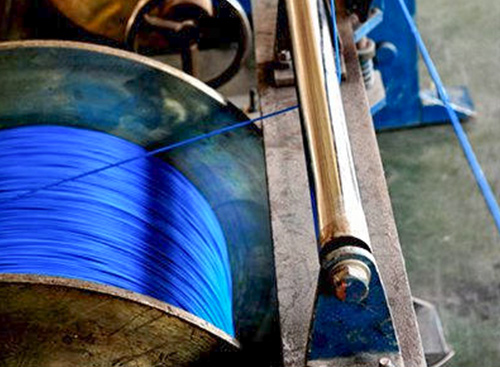For medium voltage XLPE insulated power cables, there a […]
For medium voltage XLPE insulated power cables, there are usually the following waterproof structures:
1. For single-core cables, wrap a semiconducting resistance hose on the insulation shield of the cable, wrap a general water-blocking tape outside the metal shield, and then squeeze the outer sheath. The outer sheath material can be general PVC, HDPE material with radial water blocking function can also be used, depending on other functional requirements of the cable. Regarding the three-core cable, in order to ensure the full contact of the metal shield, only the single-conductance resistance hose is wrapped outside the insulating shield, and the water blocking tape is no longer wrapped outside the metal shield. Depending on the requirements of the waterproof function, general filling or Water blocking filling, inner lining and outer sheath materials are the same as those described in single-core cables.
2. The aluminum-plastic composite tape layer is longitudinally wrapped inside the outer sheath or inner lining layer as a waterproof layer.
3. Squeeze the HDPE outer sheath directly on the outside of the cable.

For XLPE insulated cables above 110kV, the metal sheath is mainly used to make the cables meet the waterproof requirements. The biggest feature of the metal sheath is that it is completely impermeable, so the cable with the metal sheath has a very good radial water blocking function. The main types of metal sheath are: hot-pressed aluminum sleeve, hot-pressed lead sleeve, welded corrugated aluminum sleeve, welded corrugated steel sleeve, cold drawn metal sleeve, etc.
Cable waterproof form:
Cable waterproofing methods are generally divided into longitudinal water blocking and radial water resistance. Water blocking yarn, water blocking powder and water blocking tape are commonly used in longitudinal water blocking. Their water blocking mechanism is that these materials contain a material that can swell in contact with water. When water flows from the cable end or from the sheath After entering the defect, this material will quickly swell with water to prevent further dispersion of water along the longitudinal direction of the cable, thus completing the purpose of longitudinal waterproofing of the cable. Radial water resistance is mainly accomplished by extruding HDPE non-metallic sheath or hot pressing, welding, and cold drawing metal sheath.
Cable waterproof test basis:
Cable waterproof test method, the longitudinal water blocking function of the cable can now be tested and judged through the water permeability test; and the radial water blocking function of the cable is now mainly determined by indirect methods, such as checking the HDPE non-metal sheath or non-metal Whether the sheath is defective, if these sheaths are judged to be incomplete, then the cable is considered to have a good radial water blocking function. However, many users of this method have raised some questions and look forward to a better way to deal with these disputes.
The above analysis may not be comprehensive, but I hope it will be helpful to everyone in the process of purchasing waterproof cables.